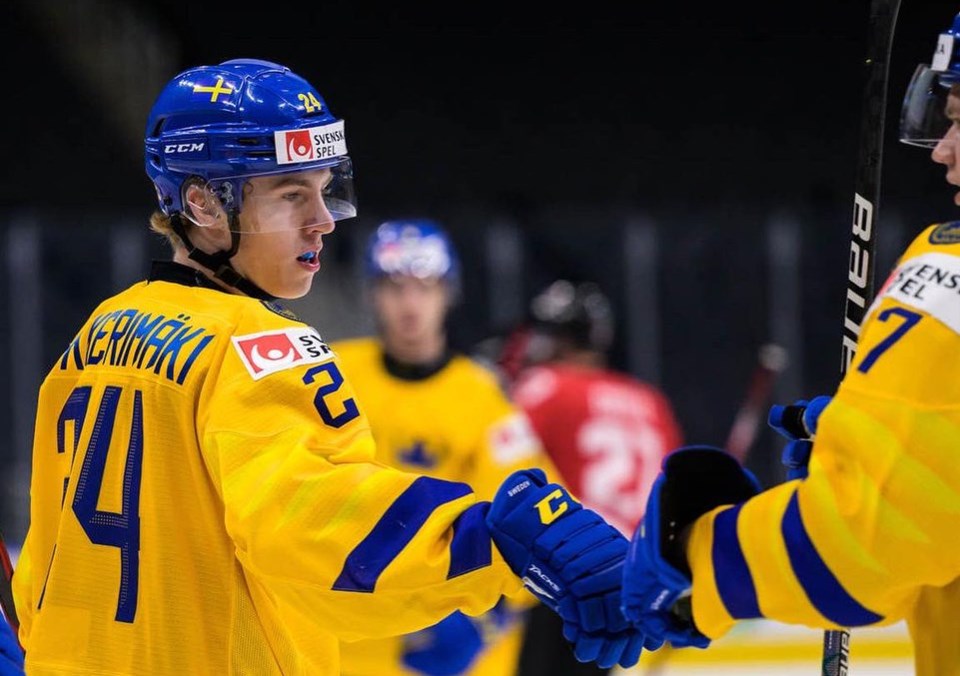It is the nature of international hockey that some teams will be significantly better than others.
Countries with far more hockey players will inevitably be better than countries with a relatively low number of players. Certainly, smaller countries can narrow the gap with strong development programs and coaching but there’s only so much that a smaller hockey country can do against a bigger one.
The differences can be particularly acute in junior hockey. At the Olympics or World Championships, a few star players can play for their country for a couple of decades and a smaller country can combine a couple of generations to put together a decently strong team.
At the World Junior Championship, all of the players on a team are within two years in age, maybe three years if there’s a particularly precocious 16 year old. That’s a tall order for a smaller hockey country.
That’s the case for Austria, a country that typically plays in the second division in international junior hockey. The few times that they have earned promotion to the top level at the World Junior Championship, they’ve been immediately relegated the next year.
This is their third-straight tournament at the top level, however, as promotion and relegation has been suspended at the last couple of tournaments due to the COVID-19 pandemic. They’ll be in tough to avoid relegation this year, however, particularly if their first game against Sweden is any indication of how their tournament is going to go.
It was an extremely lopsided game, as Sweden not only scored 11 goals to Austria’s zero, but Austria only had 13 shots on goal. They barely managed to get more shots than Sweden had goals.
For Austria, it was an opportunity to get experience playing some of the best junior players in the world. For Sweden, it was all about building confidence heading into the rest of the tournament.
Lekkerimäki and Pettersson tally three points combined
The confidence-building included Vancouver Canucks prospects Jonathan Lekkerimäki and Elias Pettersson — the defenceman, not the forward — both of whom picked up points in the win.
They were far from alone. Sweden spread the wealth, with 17 of their 21 players picking up points, including goaltender Carl Lindbom.
Lekkerimäki played on the third line with Fabian Wagner and Victor Stjernborg, instead of on the second line with his Djurgården teammates Noah Ostlund and Liam Öhgren. He also was in the bumper on the second power play unit.
The Canucks’ first-round pick in the 2022 NHL Entry Draft played well, though it’s difficult to evaluate given the quality of the competition. He had two points, picking up a goal and an assist.
The goal was a gorgeous shot from distance, the exact type of snipe that had scouts raving during his draft year. He had a little help because the Austrian defenceman got his stick caught on his goaltender, making it difficult for him to cover the short side post.
The release on Lekkerimäki’s shot is something special. He can get his shot away remarkably quickly with both velocity and precision and his shot pinged off the post and in.
Lekkerimäki’s assist came on a strong defensive play, sneaking in behind his man to lift a stick, then sending away Fabian Wagner in transition.
Pettersson had just one point, an assist. As assists go, it was fairly ordinary: a cross-ice, D-to-D pass in the offensive zone to Simon Robertsson, who attacked the middle of the ice before firing a shot through traffic.
Overall, Pettersson had a strong game. He covers a lot of the defensive zone with his size and skating: he eats up ice with strong, smooth strides. His breakout passes are crisp and accurate and he’s not shy about jumping up ice, trusting that he can get back defensively with his mobility.
He leverages his size well, taking the body in open ice and along the boards. Again, it’s difficult to assess Pettersson given the quality of competition, but he kept a tight gap in transition and eliminated chances with an active stick. The closest he came to getting beat, he got his body on his man to prevent a shot, won the puck, and immediately transitioned the puck up ice with a stretch pass.
The one thing that seemed to be missing from his game was an element of misdirection and manipulation. A key part of the transition game for a defenceman in the NHL is adding small fakes to create space and passing lanes.
Perhaps it was the level of competition, but Pettersson was very direct and straightforward on the breakout and in transition. It was effective, because he’s such a strong skater and passer, but against tougher competition, they’ll close out his space more quickly and make it difficult for him to break the puck out smoothly.
It might not be an issue but it’s something to keep an eye on with his development.




